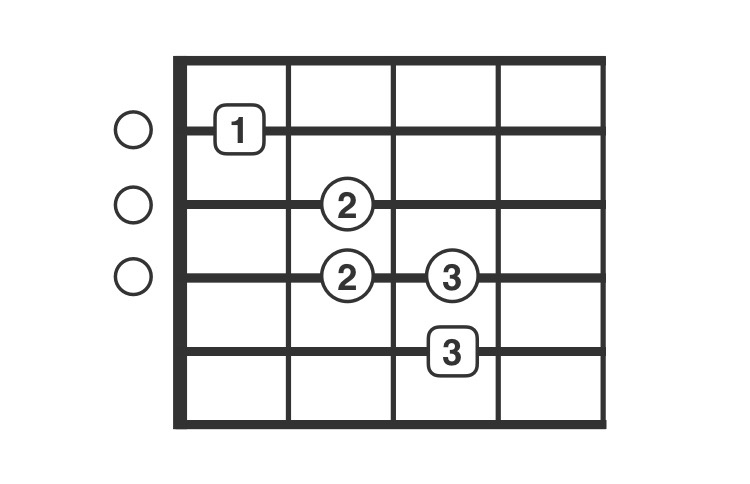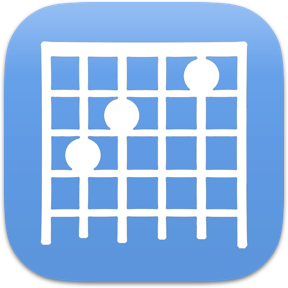GUITAR LESSONS
Guitar Scales for Beginners
On this page, you'll learn the most important guitar scales for beginners. These scale patterns will help you to play lead guitar, craft solos, and boost your music theory knowledge, too.
The first three scales most beginners should master are:
These three scales will get you comfortable playing single notes instead of chords.
Scale 1The Major Scale, Open Position
WHY LEARN IT This version of the major scale is the easiest scale to learn, because it’s based on the open C major chord shape that you already know.
Most of the chords and melodies we hear every day is made up out of notes in the major scale. Learning how to play it is your first step towards understanding how music gets put together.
Practice Tips
Use the diagram below to help you learn—start on the thickest string, with your third finger on the third fret of the fifth string, and work your way up the scale, one note at a time.

 for first finger,
for first finger,  for middle,
for middle,  for ring finger, etc... Square dots
for ring finger, etc... Square dots  indicate the root note of the scale.
indicate the root note of the scale.You can use the notes in this scale to play solos or create melodies in the key of C Major.
Once you've mastered this open-stringed version, move on to the more advanced, movable shape below.
Scale 2The Pentatonic Minor Scale
The minor pentatonic scale is the first movable scale shape you should learn.
Not only is it a useful scale to practice solos, but the fact that it has only five notes (pent-atonic, like pent ⬠ agon), and a very simple shape, makes it easy to learn and remember:

 for first finger,
for first finger,  for middle,
for middle,  for ring finger, etc... Square dots
for ring finger, etc... Square dots  indicate the root note of the scale.
indicate the root note of the scale.How to Play the Minor Pentatonic Scale
First, learn to play the first octave, the first five notes, starting on the thickest string.
In this example, we'll be playing the A Minor Pentatonic Scale, starting at the fifth position, where your index finger is on the fifth fret.
Practice Tips
- Remember: stay in position. For this pattern, each finger plays just a single fret.
- Just like typing on a computer keyboard is faster without looking, playing in position will give you a feel for where your fingers belong to play each note.
When you’re ready, follow along with the video below to play the whole pattern:
WHY LEARN IT This movable scale shape will allow you to play the same pattern in every key. It's the first step to understand your guitar's fretboard and start using the full range of the guitar.
Scale 3The Major Scale, Movable Shape
Once you've learned a simple C major scale in the open position, it's time to learn another way to play it, way up at the seventh fret.
Like the pentatonic minor scale, with this movable shape, you can play the same pattern starting at different frets to change the key of the scale completely—your C major scale can become a D major scale, or a Gb major scale, just by starting on a different note.
Here's a diagram to help you practice:

 for first finger,
for first finger,  for middle,
for middle,  for ring finger, etc... Square dots
for ring finger, etc... Square dots  indicate the root note of the scale.
indicate the root note of the scale.Practice Tips
- You can change the key of the scale by starting the pattern on a different fret.
- Learn the notes on the sixth string of your guitar to help you choose which scale to play.
WHY LEARN IT With this movable major scale, you’ll be able to play along with most of your favorite songs, in any key.
Next StepsWhat to Practice Next
Once you get these three under your fingers, don’t just jump to the next scale—practice and play with them, and learn to use them to make the kind of music you love.
Practice going up and down each scale along with a metronome—see how fast you can go.
Put on one of your favorite songs, then try to find the notes from the song's melody. Can you find those same notes inside one of these scale shapes?
Keep playing, keep learning, and keep having fun.
Andrés Wilson holds a B.M. from the Berklee College of Music, a M.A. in literature from Columbia University, and a PhD in Comparative Literature from the University of Massachusetts, Amherst.



